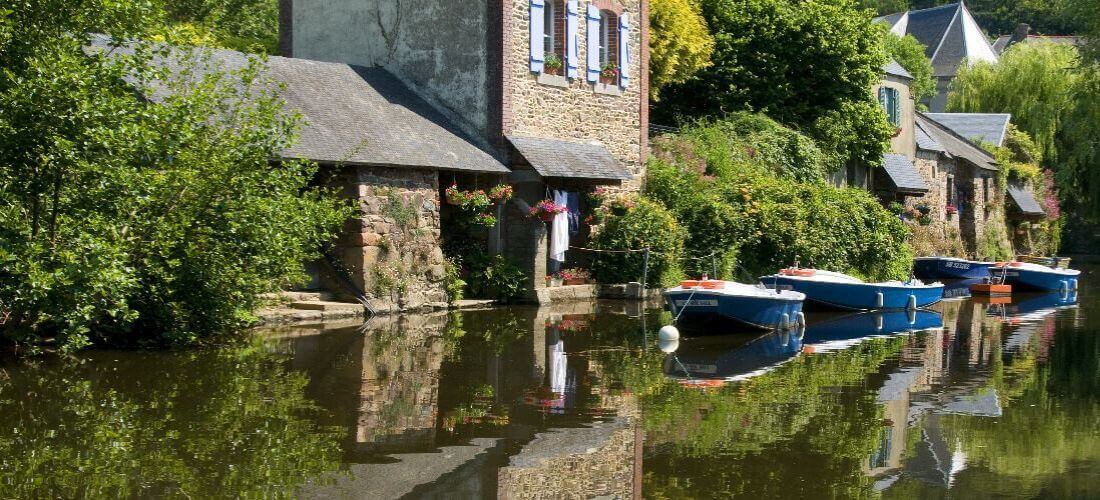
Towns of Art and History and Small Towns of Character.
Les petites citées de caractère.
A label awarded to a small number of villages and towns in France with a remarkable architectural and natural heritage. These are true Breton gems!
Chatèlaudren, with the Leff river running through it.
An ancient fortress protected by a hydraulic system fed by the Leff. A market is held here every Monday morning.
- The former Petit Echo de la Mode printing works, now a cultural venue. The first women's magazine in 1920. The factory published fashion patterns.
- Notre-Dame-du-Tertre chapel, built in the 14th century. See its magnificent painted ceiling.
- The Latin Quarter, the old working-class district around the church.
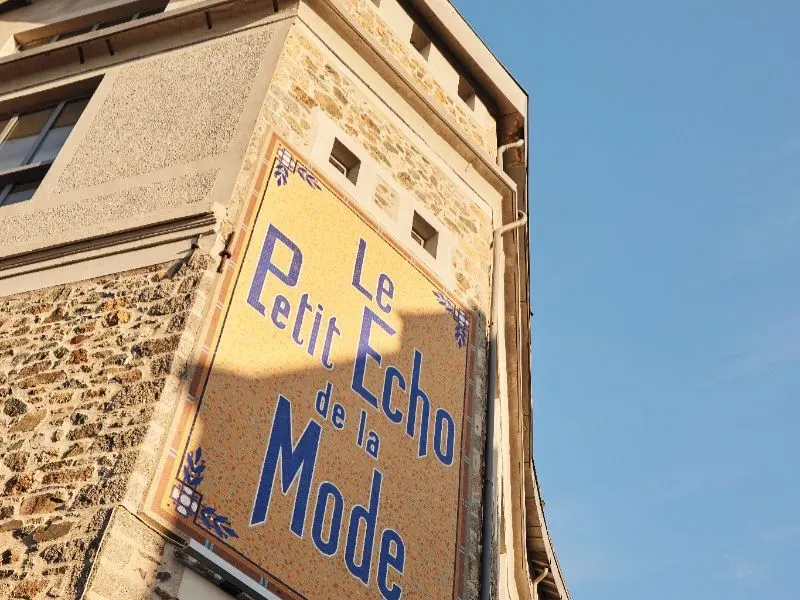
Pontrieux owes its name to the river Trieux.
A must-see. Don't forget to take the wash-house tour! A great wash-house festival is held on 15 August. Markets on Monday mornings.
- Nicknamed the little "Venice" of Trégor. What to see :
- 16th to 19th century timber-framed and dressed stone houses, the 16th century "Eiffel Tower" house &.
- The 18th-century granite fountain
- Fifty flower-bedecked and illuminated wash-houses to discover by boat, day or night.
- Le vapeur du Trieux, a small steam train that takes you back in time between Paimpol and Pontrieux to discover the Trieux estuary.
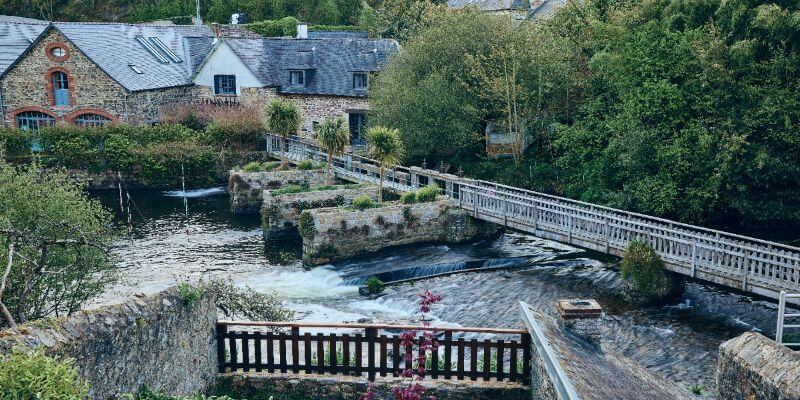
Tréguier, ancient episcopal city
The town's timber-framed houses, granite mansions, streets, alleyways, hidden gardens and the Jaudy river running through it are all there for visitors to discover. A Grand pardon de la Saint-Yves takes place on the 3rdᵉ Sunday in May. Patron saint of Bretons and lawyers takes place on 3ᵉ Sunday in May.
- Saint-Tugdual Cathedral, a masterpiece of Breton religious architecture and its magnificent cloister of 48 arcades.
- The Ernest Renan museum.
- The former episcopal palace
- The former Augustinian monastery
- The Paulines chapel, now a cultural centre.

Moncontour-de-Bretagne
A medieval town built on a promontory. Take a stroll down the streets and alleys to discover the ramparts and gardens. A major medieval festival is held every two years. A market is held every Tuesday afternoon.
- The 16ᵉ church of Saint-Mathurin.
- The 18ᵉ century ramparts and towers and the remains of the castle.
- The alleyway and narrow streets with old granite or timber-framed town houses.
- Hildegarde's garden
- The reach of the old canal and the Saint-Michel mills
Guingamp, former capital of the Penthièvre region
- The Basilica of Notre Dame de Bon secours
- The 18ᵉ century monastery of the Augustinian Hospitallers.
- The prison
- The central square and the La Plommée fountain - An important market takes place on Saturday mornings.
- The timber-framed houses of the Guingamp school 15 and 16 centuries. -Nice walk along the banks of the Trieux.
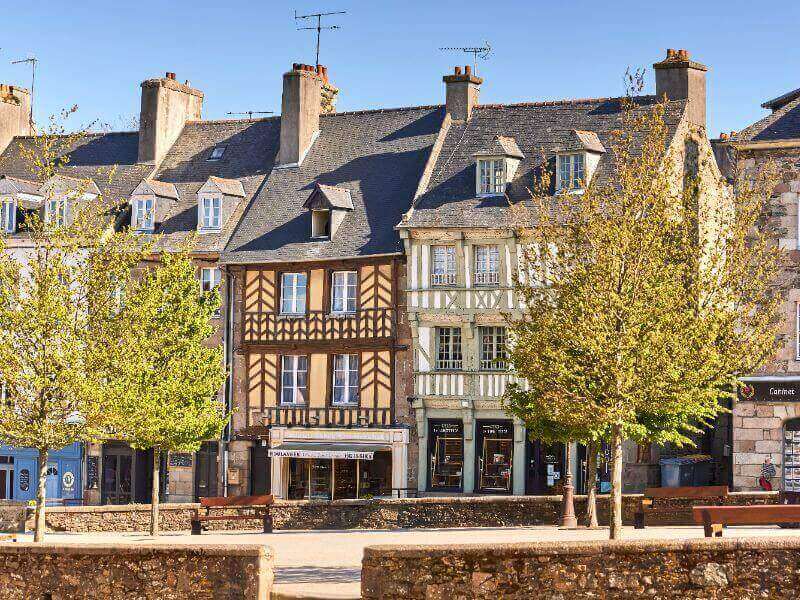
Jugon-les-Lacs
This town is crossed by two rivers: the Arguenon and the Rosette. A paradise for fishermen and water sports enthusiasts.
Quintin, city of linen
Quintin's reputation for linen production made it a prosperous town. A major Weavers' Festival is held here at the beginning of August. Places to visit
- l'Étang and the château de Quintin with its grounds
- the Notre-Dame-de-Délivrance basilica
- Place 1830 and its 16thᵉ century timber-framed house.
- The 18ᵉ century Perthus-Chaud wash-house.
- The Porte Neuve: 15ᵉ century towers at the entrance to the walled town.
La Roche-Derrien and Léhon
Towns of Art and History
Dinan
Brittany's largest medieval town has preserved a magnificent architectural heritage. Its picturesque streets, ramparts and banks of the River Rance create a unique medieval atmosphere.
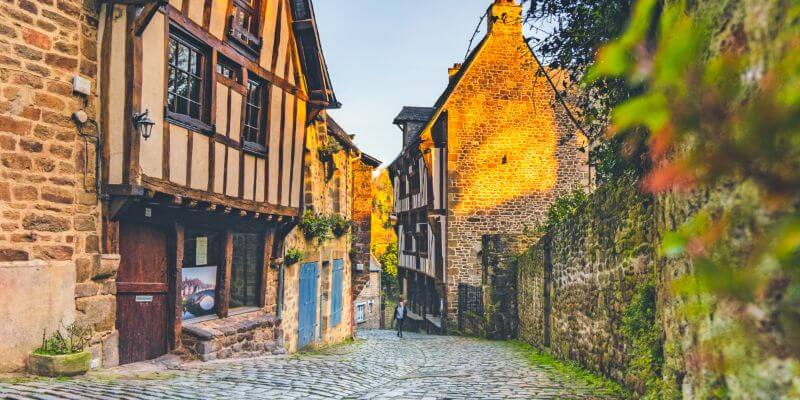
Lamballe
This historic town is renowned for its architectural heritage. Here you can admire timber-framed houses and granite mansions. Let yourself be seduced by the authenticity of Lamballe and its atmosphere steeped in history. Don't forget to visit the Lamballe stud farm and its Breton horses.







